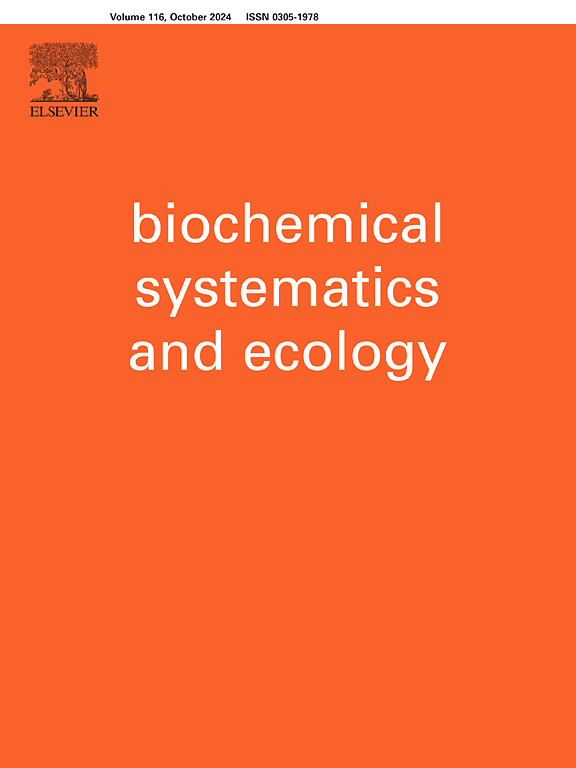Chemical constituents and chemotaxonomic studies from Agrimoniae Herba (Agrimonia pilosa Ledeb.)
IF 2
4区 生物学
Q4 BIOCHEMISTRY & MOLECULAR BIOLOGY
引用次数: 0
Abstract
A phytochemical study of Agrimoniae Herba (Agrimonia pilosa Ledeb.), led to the isolation of twenty-eight compounds, including eleven triterpenoids (1–11), seven flavonoids (12–18), four galactolipids (19–22), three phenols (23–25), two sterols (26–27), and one isocoumarin (28). The structures of these compounds were identified by spectroscopic data and compared with those previously reported. Compounds 1, 4, 10, 19, 21, 22 and 25–27 were the first to be reported in the family Rosaceae, compounds 9, 20 and 23–24 were firstly identified from the genus Agrimonia. The chemotaxonomic study of these compounds is discussed.

禾本科草(Agrimonia pilosa Ledeb.)化学成分及化学分类研究
从海茅中分离得到28个化合物,包括11个三萜(1-11)、7个类黄酮(12-18)、4个半乳脂(19-22)、3个酚类(23-25)、2个甾醇(26-27)和1个异香豆素(28)。通过光谱数据鉴定了这些化合物的结构,并与先前报道的结构进行了比较。其中化合物1、4、10、19、21、22和25 ~ 27为首次从蔷薇科中分离得到,化合物9、20和23 ~ 24为首次从该属中分离得到。讨论了这些化合物的化学分类学研究。
本文章由计算机程序翻译,如有差异,请以英文原文为准。
求助全文
约1分钟内获得全文
求助全文
来源期刊

Biochemical Systematics and Ecology
生物-进化生物学
CiteScore
3.00
自引率
12.50%
发文量
147
审稿时长
43 days
期刊介绍:
Biochemical Systematics and Ecology is devoted to the publication of original papers and reviews, both submitted and invited, in two subject areas: I) the application of biochemistry to problems relating to systematic biology of organisms (biochemical systematics); II) the role of biochemistry in interactions between organisms or between an organism and its environment (biochemical ecology).
In the Biochemical Systematics subject area, comparative studies of the distribution of (secondary) metabolites within a wider taxon (e.g. genus or family) are welcome. Comparative studies, encompassing multiple accessions of each of the taxa within their distribution are particularly encouraged. Welcome are also studies combining classical chemosystematic studies (such as comparative HPLC-MS or GC-MS investigations) with (macro-) molecular phylogenetic studies. Studies that involve the comparative use of compounds to help differentiate among species such as adulterants or substitutes that illustrate the applied use of chemosystematics are welcome. In contrast, studies solely employing macromolecular phylogenetic techniques (gene sequences, RAPD studies etc.) will be considered out of scope. Discouraged are manuscripts that report known or new compounds from a single source taxon without addressing a systematic hypothesis. Also considered out of scope are studies using outdated and hard to reproduce macromolecular techniques such as RAPDs in combination with standard chemosystematic techniques such as GC-FID and GC-MS.
 求助内容:
求助内容: 应助结果提醒方式:
应助结果提醒方式:


